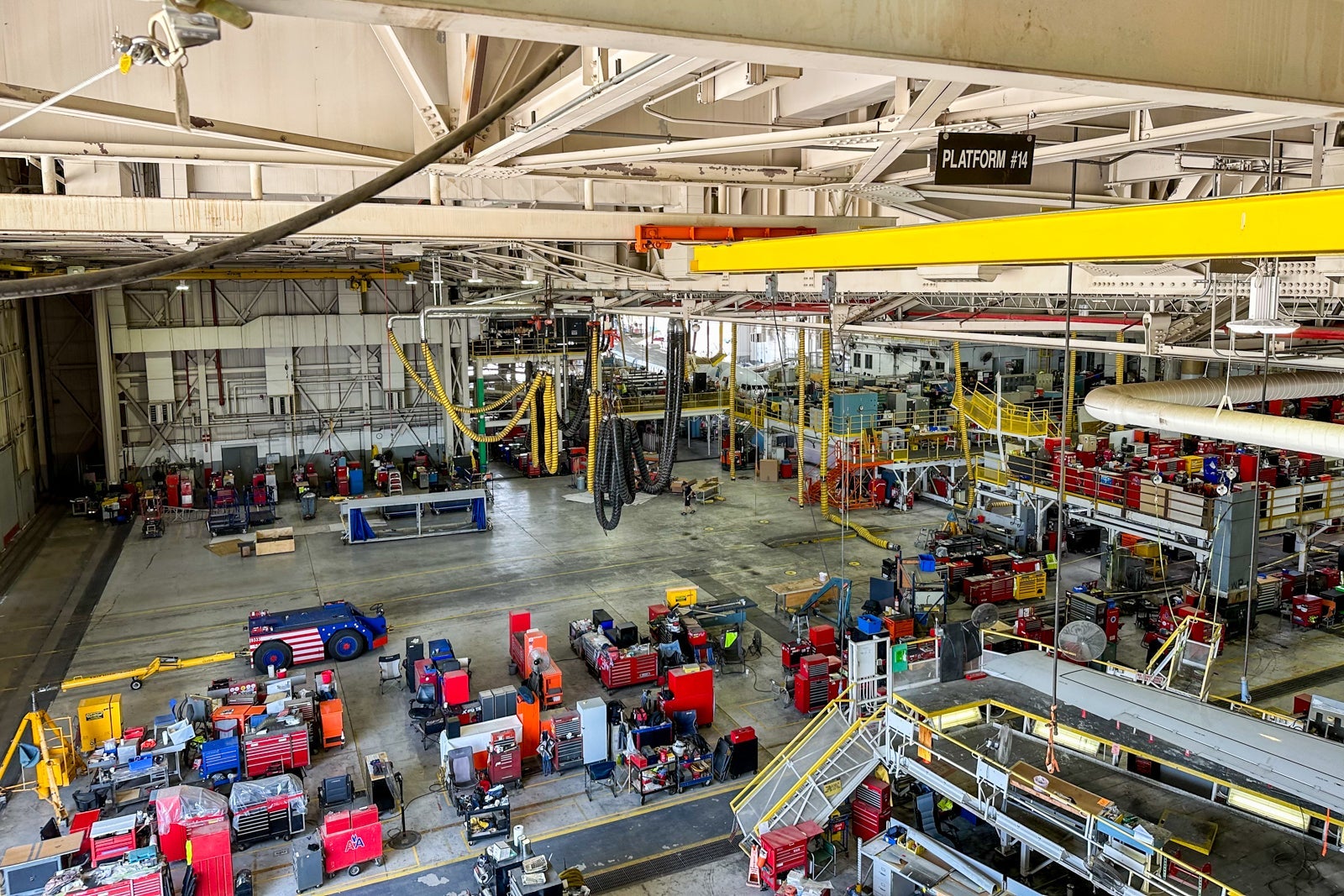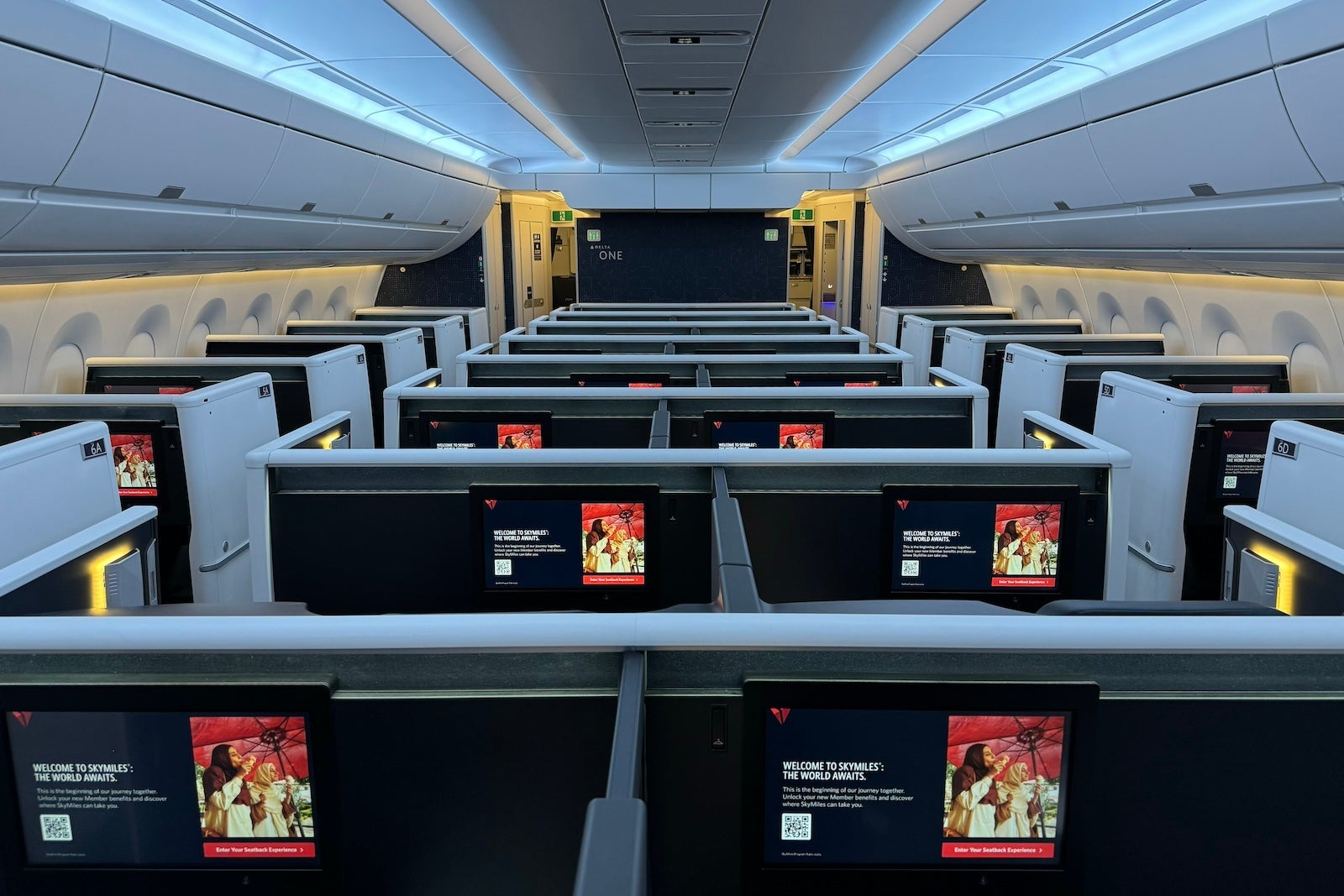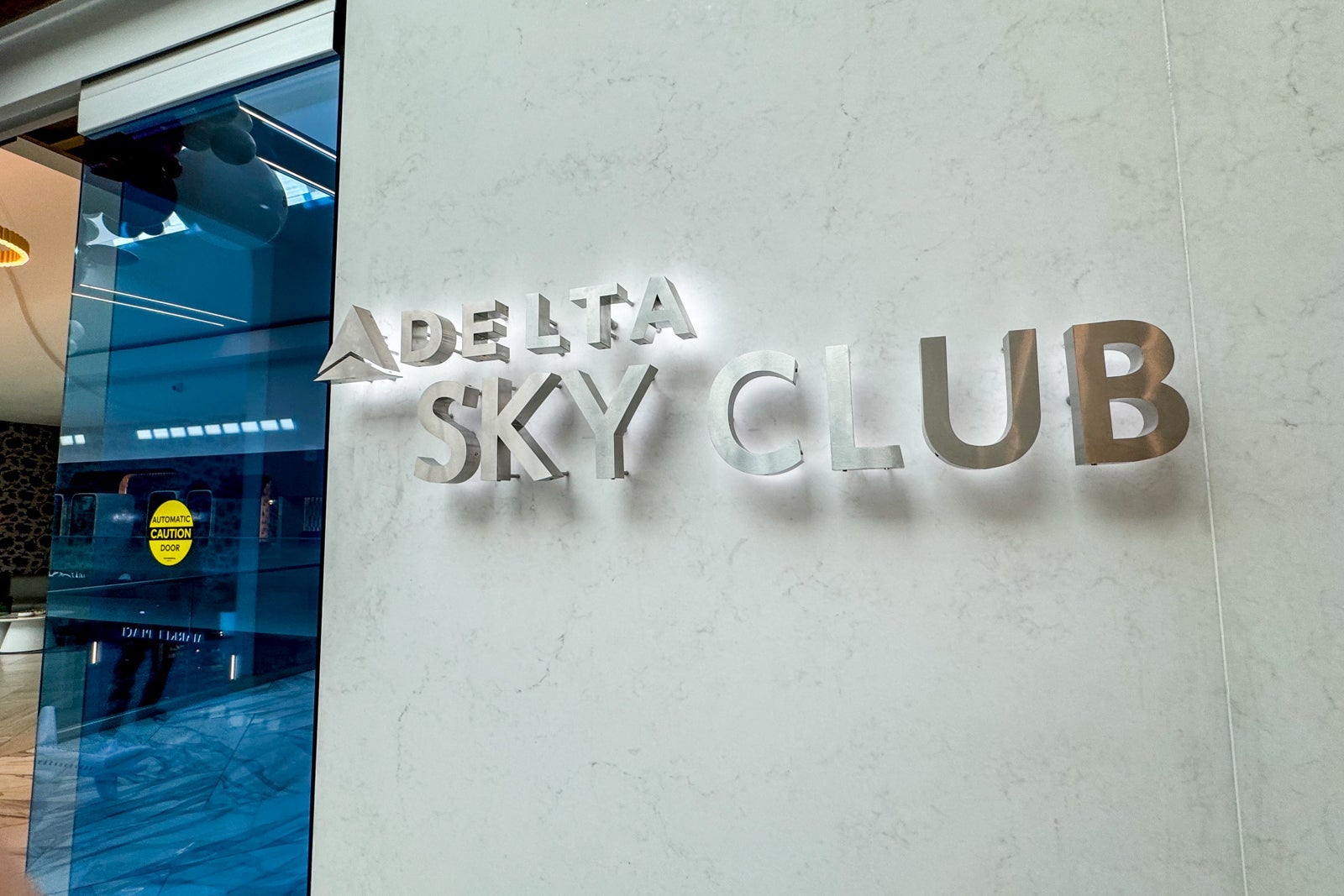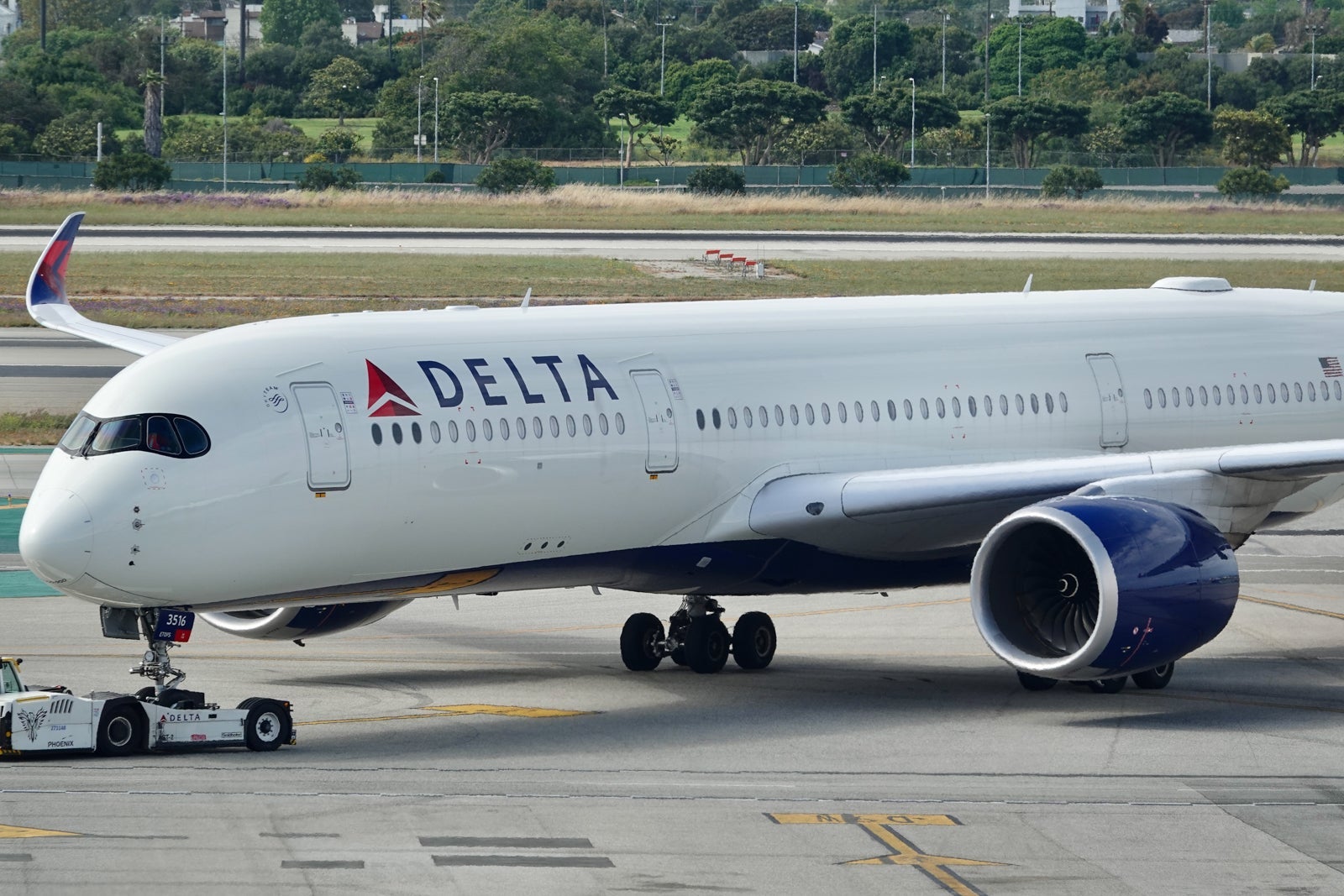تجارتی ہوائی جہاز کی بحالی کے چکنے عمل کے اندر
تجارتی ہوائی جہاز کی بحالی کے چکنے عمل کے اندر
ADVERTISEMENTNewsInside the dizzying process of commercial aircraft maintenanceMeghna MaharishiMeghna MaharishiAviation ReporterMeghna Maharishi is an aviation reporter at TPG. She specializes in everything related to airlines, including their day-to-day operations, newly unveiled flight routes and lesser-known aspects of the industry.July 19, 2023•12 min readThe cards we feature here are from partners who compensate us when you are approved through our site, and this may impact how or where these products appear. We don’t cover all available credit cards, but our analysis, reviews, and opinions are entirely from our editorial team. Terms apply to the offers listed on this page. Please view ouradvertising policy andproduct review methodology for more information.Every American Airlines plane flies for hundreds of hours, carrying thousands of passengers for miles across the globe. But after a while, even the most reliable aircraft needs a break. For some of them, that break comes at a sprawling 3.3 million-square-foot facility in Tulsa, Oklahoma.Functioning as its own ecosystem within Tulsa, this facility's various hangars and warehouses are where the airline's planes are picked apart. Seats and engines are refurbished. Exteriors are repainted to sport red, white and blue stripes along the tail fins.These are only some of the many tasks that occur in this spacious, maze-like facility. Hangars upon hangars stretch across the massive property by a National Guard base and an Amazon warehouse."It's like a city within a city," Barbara Cruz, a store supervisor at American's Tulsa facility, said.Thousands of American planes have gone through Tulsa since 1946, when the Fort Worth-based carrier relocated its maintenance base from LaGuardia Airport (LGA) to the old oil capital following World War II.A 777 hangar. MEGHNA MAHARISHI/THE POINTS GUYThe base — a major hub for American's maintenance operations — now has about 4,800 employees and claims to be one of the largest commercial aviation bases in the world.At any given time, the facility can hold up to 20 narrow-body aircraft in its hangars; 800 commercial planes pass through it annually.In 2020, American unveiled plans to invest $550 million in the Tulsa base to construct a new wide-body hangar and make improvements to each building in the facility. The new hangar should've begun taking shape in early 2021, but its construction start date was pushed back due to the coronavirus pandemic. It will be able to hold two wide-body (or about six narrow-body) aircraft at a time.The cockpit of a 777 before the plane is stripped to undergo maintenance. MEGHNA MAHARISHI/THE POINTS GUYDespite the renovation delays, the Tulsa base serves as an important destination for many American aircraft. It handles every bit of maintenance for a plane, from cleaning out toilets to inspecting engines.Daily NewsletterReward your inbox with the TPG Daily newsletterJoin over 700,000 readers for breaking news, in-depth guides and exclusive deals from TPG’s expertsBoeing 737s and 777s are the jets that primarily make their rounds in Tulsa. The aircraft either go through heavy, routine or unscheduled maintenance in a process that's similar to surgery."We document all the findings," Ed Sangricco, the managing director at the Tulsa base, said. "We go in, and we fix all those findings. We close the airplane, we put it back together again, and then we check everything — we make sure everything works."While the pandemic halted travel and grounded planes worldwide, that didn't stop the maintenance technicians, engineers, managers and supervisors in Tulsa. American's aircraft technicians were tasked with maintaining roughly 100 aircraft already at the base to prevent corrosion (and to stop weeds and birds from infesting the crevices of the planes). That meant remote work wasn't an option for the employees at the Tulsa base.Airlines received billions of dollars from the federal government during the pandemic partly to keep their fleets in tip-top shape, so they would be ready when travel demand returned."Maintenance requirements don't stop during COVID-19," Sangricco said.Related: 6 incredible facts about the Boeing 777What it takes to maintain a planeMaintaining a commercial plane is a complicated process. Hearing all the steps to ensure an aircraft is running smoothly — all over the course of an eight-hour tour — was similar to taking a college crash course in physics and engineering.Aircraft maintenance is heavily governed by the Federal Aviation Administration, which has a set list of requirements and deadlines for every plane component. Every record chronicling the maintenance of an aircraft needs to be preserved to be in compliance with the FAA, according to Roger Steele, a supervisor at the Tulsa facility who specializes in 737 narrow-body maintenance.So, document holders containing slips of paper that detail every task from the FAA line two walls of an office within a 737 hangar at the Tulsa base.A list of FAA-mandated tasks for the cabin of a 737. MEGHNA MAHARISHI/THE POINTS GUYAt the start of a visit, a 737 narrow-body will undergo about 1,200 required tasks — excluding non-routine inspections — before it can fly again.The Tulsa facility is never quiet. Throughout my tour of the maintenance site, I could hear constant drilling noises and the occasional thunderous engines of a National Guard plane taking off a couple of miles away as Steele explained the ins and outs of narrow-body maintenance.The 737 I saw in the hangar had already been stripped down, as it was in its fifth day of maintenance. (The crew at American has around 25 days to completely finish work on the plane.)The seats, the walls and the flooring were completely gutted from the aircraft. All that was left inside were gray insulation bags on all sides, which made the 737 look more like a cave than a plane.The inside of a gutted 737. MEGHNA MAHARISHI/THE POINTS GUYInside, technicians were already hard at work. One was by the plane's back door, critically documenting what parts had been affected by corrosion.While several areas can suffer from corrosion, a plane's galleys and lavatories are the most susceptible to corrosion and environmental damage, as moisture from toilets and soft drinks wear down the interior."What coffee and soda pop can do to an aircraft after humans consume it is very corrosive," Steele joked.Once the technician documented the damage, the next step was determining what parts needed reinforcement. One piece of metal in the galley suffered from corrosion, so the technician sanded the area and recorded its remaining structural thickness.The door of a 737. MEGHNA MAHARISHI/THE POINTS GUYLike the maintenance process itself, refurbishing an aircraft is anything but glamorous. At the Tulsa base, the majority of hangars and buildings have no air conditioning, leaving most of the workers stuck toying away at engines and aircraft in the sweltering summer heat.When I toured the site, it was already a muggy 90 degrees, but Tulsa summers can soar well into the 100s during the season's peak.For some, the day starts early. Robert Bales, a maintenance technician who works on wide-body half galleys, normally wakes up at 5 a.m. for his 6:30 a.m. shift.Each technician works around 8 1/2 hours. Much of the schedule, specifically for cabin work, is determined by the crew chief and the needs of the aircraft.All that's left of the 737 as it begins its maintenance process are the insulation bags. MEGHNA MAHARISHI/THE POINTS GUYBefore someone can start working at the facility as a technician, they must undergo significant training.Gabriel Figueroa Navedo, another wide-body aircraft technician, said he went to trade school to receive an FAA-issued aircraft technician license. There, Navedo — who first started his career managing reservations and bookings for American — learned extensively about topics like hydraulics and electricity.However, Navedo said many of those skills do not directly apply to his day-to-day job. Instead, the training provided a general knowledge of planes."I like to call it a license to learn," Navedo said, "because it's got to cover stuff like small propeller engines, and the FAA doesn't know if you're gonna work here, or if you're gonna be working on your own private plane."Related: What it's really like at flight attendant trainingEven the seats and toilets need a makeoverWhen an aircraft's seats need refreshing, the plane goes to a different warehouse, where the seats get disassembled. During this process, technicians tend to find all sorts of trash underneath, including gum, candy, pills, credit cards, cellphones and iPads."You're gonna find no telling what," Brent Strickland, a supervisor who primarily works on Boeing 777s and 787s, said.Strickland said he has even found false teeth and engagement rings inside the seats.A set of seats that have already had the cushions stripped. MEGHNA MAHARISHI/THE POINTS GUYAfter removing the various items passengers leave behind, the seats are washed and left to dry. Then, the technicians check the hardware for any damage.Cushions are changed about every six years, according to Strickland, and it only takes two to three days to completely finish a seat.It's not just the seats that need refurbishing during maintenance — the toilets also get picked apart. The waste tanks are cleaned out, and the flushes are inspected by another team of technicians dedicated to toilet maintenance. Strickland described those team members as "another one of those unsung heroes."Dee West, a technician, cleaned out a water valve during my tour, closely inspecting the valve under the scope of a flashlight before carefully reassembling the three parts and a spring in the pipe."It ain't no joke," he said. "It's gotta be done right."The inside of a tank that stores all the waste flushed from the toilets. MEGHNA MAHARISHI/THE POINTS GUYOne mistake by a toilet technician could be costly for the airline, as each toilet costs $17,000.Perhaps surprisingly, this area of focus is one of the more desirable on the Tulsa base, according to an American spokesperson. That's because it's one of the few jobs workers can do inside an air-conditioned building — providing a reprieve from the otherwise hot and muggy weather Tulsa experiences every summer.The tank where all the waste from the toilet is stored. The tank is cleaned out and repolished with a sealant during maintenance. MEGHNA MAHARISHI/THE POINTS GUYEngines, windows and other plane parts also get a makeover, depending on the aircraft's maintenance schedule. This includes the fans and combustive parts of the engine, which the staff works on separately in "cold" and "hot" rooms within another hangar, respectively.A 737 engine. MEGHNA MAHARISHI/THE POINTS GUYBlue lines on the walls demarcate the "cold" parts of the room, whereas painted yellow lines indicate the "hot" area.Staff members also inspect some parts of the engine by soaking them in a fluorescent lime-green liquid to magnify which parts need to be reinforced.Parts of the engine are doused in a fluorescent lime-green substance for inspection. MEGHNA MAHARISHI/THE POINTS GUYWhenever parts like the wings and the radome — located at the tip of the plane — need a lift, they are sent to a composite center. There, they get reinforced with materials such as carbon fiber and a honeycomb web made from materials like aluminum."[It's] poetry in motion," Jody King, a composite repair center crew chief at American's composite repair center, said when referring to the process of fitting the materials onto parts of the aircraft.A set of radomes undergoing maintenance. MEGHNA MAHARISHI/THE POINTS GUYThe reason this complex web of maintenance is even possible is because American's site also has a warehouse containing thousands of parts and stickers. These parts are either shipped to other hangars in Tulsa or to airports and third-party services that need to do maintenance on an aircraft.An aisle containing stickers and parts in American's shipping warehouse. MEGHNA MAHARISHI/THE POINTS GUYRelated: Take a look inside Air New Zealand's unique cabin innovation laboratoryGearing up to fly againBefore a plane is ready to fly again, the landing gear — the wheels on the plane, in layman's terms — must be checked, and the exterior must be repainted and rewaxed.You may not notice the gargantuan size of planes since you typically only see them from afar in the sky or through the windows of an airport. However, were you to see one up close, you'd be struck by the size.The landing gear alone measures at least 21 feet tall, roughly the equivalent of four people my height (I'm around 5 feet, 4 inches) standing on top of one another.The exteriors of American's aircraft are repainted and rewaxed by hand. MEGHNA MAHARISHI/THE POINTS GUYThe wings also feel so vast it almost seems impossible that workers can repaint them by hand in a matter of days; the team uses foam rollers and brushes, according to Jeff Green, a shared services supervisor.Once the plane completes its maintenance maze in Tulsa, it's ready to return to the skies and fly to hundreds of destinations. Later, it'll likely touch down in Tulsa yet again to go through the same routine.Featured image by MEGHNA MAHARISHI/THE POINTS GUYEditorial disclaimer: Opinions expressed here are the author’s alone, not those of any bank, credit card issuer, airline or hotel chain, and have not been reviewed, approved or otherwise endorsed by any of these entities.TPG featured cardBest for businesses with high spendingCapital One Venture X BusinessApply for Capital One Venture X BusinessTerms & restrictions apply. See rates & feesTPG Editor‘s RatingOpen Editors ratingCard Rating is based on the opinion of TPG‘s editors and is not influenced by the card issuer.4.5 / 5Go to reviewApply nowApply for Capital One Venture X Businessat Capital One's secure siteRewards2 - 10X milesdetails2X miles2 miles per dollar on every purchase5X miles5 miles per dollar on flights and vacation rentals booked through Capital One Business Travel10X miles10 miles per dollar on hotels and rental cars booked through Capital One Business TravelIntro offerLIMITED-TIME OFFER: Earn up to 400K bonus milesdetailsEarn 200K miles when you spend $30K in the first 3 months, and an additional 200K miles when you spend $150K in the first 6 monthsAnnual Fee$395Recommended Credit740-850Excellentmore infoCredit ranges are a variation of FICO® Score 8, one of many types of credit scores lenders may use when considering your credit card application.Why We Chose ItThe Capital One Venture X Business Card has all the Capital One Venture X Rewards Credit Card has to offer and more. It offers an incredible welcome bonus and requires an equally impressive spend to qualify. In addition, the card comes with premium travel perks like annual travel credit. (Partner offer)Pros & ConsProsThe Capital One Venture X business card has a very lucrative welcome offer.In addition, the card comes with many premium travel perks such as an annual $300 credit for bookings through Capital One Business Travel.Business owners are also able to add employee cards for free.ConsThe card requires significant spending to earn the welcome offer.Another drawback is that the annual travel credit can only be used on bookings made through Capital One Business Travel. More DetailsLIMITED-TIME OFFER: Earn up to 400K bonus miles: 200K miles when you spend $30K in the first 3 months, and an additional 200k miles when you spend $150k in the first 6 monthsEarn unlimited 2X miles on every purchase, everywhere—with no limits or category restrictionsEarn 10X miles on hotels and rental cars and 5X miles on flights and vacation rentals booked through Capital One Business TravelWith no preset spending limit, enjoy big purchasing power that adapts so you can spend more and earn more rewardsEmpower your teams to make business purchases while earning rewards on their transactions, with free employee and virtual cards. Plus, automatically sync your transaction data with your accounting software and pay your vendors with easeRedeem your miles on flights, hotels and more. Plus, transfer your miles to any of the 15+ travel loyalty programsEvery year, you'll get 10,000 bonus miles after your account anniversary date. Plus, receive an annual $300 credit for bookings made through Capital One Business TravelReceive up to a $120 credit for Global Entry or TSA PreCheck®. Enjoy access to 1,300+ airport lounges worldwide, including Capital One Lounge locations and Priority Pass™ lounges, after enrollmentEnjoy a $100 experience credit and other premium benefits with every hotel and vacation rental booked from the Premier CollectionThis is a pay-in-full card, so your balance is due in full every monthApply nowApply for Capital One Venture X Businessat Capital One's secure siteTerms & restrictions apply. See rates & feesBest for businesses with high spendingCapital One Venture X BusinessTPG Editor‘s RatingOpen Editors ratingCard Rating is based on the opinion of TPG‘s editors and is not influenced by the card issuer.4.5 / 5Go to reviewRewards Rate2X miles2 miles per dollar on every purchase5X miles5 miles per dollar on flights and vacation rentals booked through Capital One Business Travel10X miles10 miles per dollar on hotels and rental cars booked through Capital One Business TravelIntro OfferOpen Intro bonusEarn 200K miles when you spend $30K in the first 3 months, and an additional 200K miles when you spend $150K in the first 6 monthsLIMITED-TIME OFFER: Earn up to 400K bonus milesAnnual Fee$395Recommended CreditOpen Credit score descriptionCredit ranges are a variation of FICO® Score 8, one of many types of credit scores lenders may use when considering your credit card application.740-850ExcellentWhy We Chose ItThe Capital One Venture X Business Card has all the Capital One Venture X Rewards Credit Card has to offer and more. It offers an incredible welcome bonus and requires an equally impressive spend to qualify. In addition, the card comes with premium travel perks like annual travel credit. (Partner offer)View MorePros + consMore DetailsProsThe Capital One Venture X business card has a very lucrative welcome offer.In addition, the card comes with many premium travel perks such as an annual $300 credit for bookings through Capital One Business Travel.Business owners are also able to add employee cards for free.ConsThe card requires significant spending to earn the welcome offer.Another drawback is that the annual travel credit can only be used on bookings made through Capital One Business Travel. LIMITED-TIME OFFER: Earn up to 400K bonus miles: 200K miles when you spend $30K in the first 3 months, and an additional 200k miles when you spend $150k in the first 6 monthsEarn unlimited 2X miles on every purchase, everywhere—with no limits or category restrictionsEarn 10X miles on hotels and rental cars and 5X miles on flights and vacation rentals booked through Capital One Business TravelWith no preset spending limit, enjoy big purchasing power that adapts so you can spend more and earn more rewardsEmpower your teams to make business purchases while earning rewards on their transactions, with free employee and virtual cards. Plus, automatically sync your transaction data with your accounting software and pay your vendors with easeRedeem your miles on flights, hotels and more. Plus, transfer your miles to any of the 15+ travel loyalty programsEvery year, you'll get 10,000 bonus miles after your account anniversary date. Plus, receive an annual $300 credit for bookings made through Capital One Business TravelReceive up to a $120 credit for Global Entry or TSA PreCheck®. Enjoy access to 1,300+ airport lounges worldwide, including Capital One Lounge locations and Priority Pass™ lounges, after enrollmentEnjoy a $100 experience credit and other premium benefits with every hotel and vacation rental booked from the Premier CollectionThis is a pay-in-full card, so your balance is due in full every monthgtm--featured-card-10186MZR Software Inventory ERP – Smart ERP Solutions for Desktop and Web.
Visit: https://mzrsoftware.com






